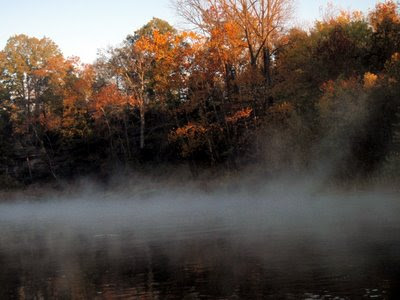
We're back from Panama! It was an excellent trip. The weather was warm, the people were friendly and the fishing was good.

We stayed the first several days in Gamboa, a small town in Soberania National Park and right next to Lake Gatun. The lake includes the northern end of the Panama Canal and is well known for it's peacock bass fishing.
There are fishing charters available, most run by American expats, and most charging U.S. prices, but we had heard rumors that local fisherman could be hired for much cheaper. We were fortunate to get some advice from the scientist who ran the lodge were we stayed. He gave us directions to a boat ramp where he claimed we could find a local guide.

After a slightly dangerous walk over a long one lane bridge and along a narrow jungle road we managed to find the boat ramp and a "guide."

Joela was probably about 14 and he spoke no english. He had a boat though, and agreed to take us fishing.

Joela had three spinning rods, one of which barely reeled and another which had only about 25 feet of line on it. He also brought a bucket of live bait and a large, empty cooler. I had packed my fly rod and a number of promising flies. So equipped, we set off up the canal at full speed. After 20 minutes of high speed maneuvering around huge cargo ships, we finally turned off the canal channel and entered one of the maze-like arms of Lake Gatun proper.

Our first stop looked promising - lots of huge submerged stumps and flooded timber. After only a few minutes, the bite turned on and I quickly switched from live bait to the fly rod. The fishing was fast and furious and we quickly filled Joela's cooler.
Tara hooked onto this fish, which I believe is the biggest she's ever caught.

We eventually moved on and after a few less productive spots had exhausted our bait. While Joela switched to a little bass lure and Tara relaxed in the sun, I continued to fish my white clouser minnow which had been extremely effective all day. The water level was high in the lake (November is the end of Panama's rainy season) and I speculated that, just like largemouth bass, there might be some large agressive males protecting their fry along the flooded banks. My hunch proved correct and I was rewarded with my largest peacock bass ever:

It was a great end to a great day of fishing. We headed for home soon after, as the perpetual mists descended from the rainforest to drench us on the ride back.
 After our stay in the rainforest, we headed to the beaches of Isla Taboga, a small island about 12 miles from Panama City. Among the 900 or so inhabitants we found Thijs and Jeannette who retired from California to Taboga several years ago. Along with their vacation rental, Thijs runs a fishing charter business.
After our stay in the rainforest, we headed to the beaches of Isla Taboga, a small island about 12 miles from Panama City. Among the 900 or so inhabitants we found Thijs and Jeannette who retired from California to Taboga several years ago. Along with their vacation rental, Thijs runs a fishing charter business. For a very reasonable rate, Captain Thijs takes clients out on his 24 foot panga, fishing around the inner islands for mahi-mahi, jacks, roosterfish, sierra mackerel, and whatever else swims by.
For a very reasonable rate, Captain Thijs takes clients out on his 24 foot panga, fishing around the inner islands for mahi-mahi, jacks, roosterfish, sierra mackerel, and whatever else swims by. The weather was unstable, but between the two days we were there we managed about 3.5 hours of fishing. We had good luck the first day, with a number of hits and one good sized sierra mackerel landed:
The weather was unstable, but between the two days we were there we managed about 3.5 hours of fishing. We had good luck the first day, with a number of hits and one good sized sierra mackerel landed: That evening, Thijs arranged for a local chef to cook the fish for our dinner. We were served huge fillets, cooked in a local style 'creole sauce' with fried yucca and patacones on the side. It was absolutley delicious and cost about $11 for both of us - definitely one of the best meals of the trip.
That evening, Thijs arranged for a local chef to cook the fish for our dinner. We were served huge fillets, cooked in a local style 'creole sauce' with fried yucca and patacones on the side. It was absolutley delicious and cost about $11 for both of us - definitely one of the best meals of the trip.














